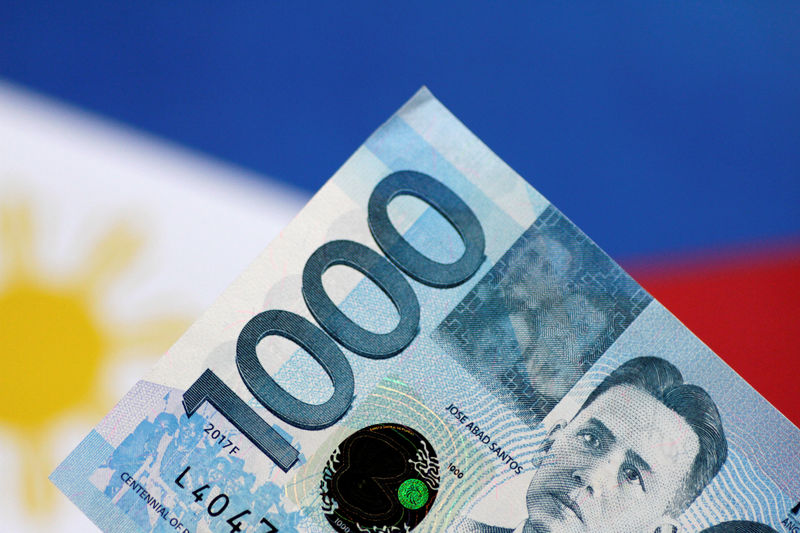Philippine Peso Slips On Disappointing GDP, Asia FX Muted Before CPI Data
2022.08.09 06:54

By Ambar Warrick
Investing.com– The Philippine peso fell the most among its Asian peers on Tuesday after the country’s second quarter GDP rose less than expected, while most other regional units moved little ahead of key U.S. inflation data.
As of 2300 ET (0301 GMT), the peso fell 0.4% to 55.585 against the dollar. Government data showed that the Philippine economy expanded by 7.2% in the second quarter, below analyst expectations of 8.6%. But the reading was still within the country’s official growth target.
But a lower-than-expected reading may see the Philippine central bank lower the magnitude of its interest rate hikes this year, as it struggles to combat runaway inflation.
Data last week showed Philippine CPI inflation rose more than expected in July. A mix of heated inflation and rising interest rates are likely to weigh on economic growth in the southeast Asian economy.
Among other Asia-Pacific currencies, China’s yuan, the Japanese yen and the Australian dollar moved barely 0.1% in either direction against the greenback.
The U.S. Dollar Index was muted on Tuesday, while dollar index futures also moved little ahead of a key CPI reading on Wednesday. Analysts are expecting an annual reading of 8.7%, down from the 9.1% rate seen in June.
While the reading will likely indicate that U.S. inflation has peaked, consumer prices will still be pinned to their highest level in 40 years.
Given that the Federal Reserve has signaled a data-driven approach to adjusting interest rates for the remainder of the year, the reading is likely to factor into their September meeting. Several Fed officials had signalled last week that more policy tightening is required to combat red-hot U.S. inflation.
In Asia, investors will also be looking to Chinese CPI figures on Wednesday, to gauge the full impact of recent COVID-19 lockdowns on the economy.
Consumer price inflation in the world’s second-largest economy is expected to have risen slightly in July, while produce price inflation is set for a sharp decline.








